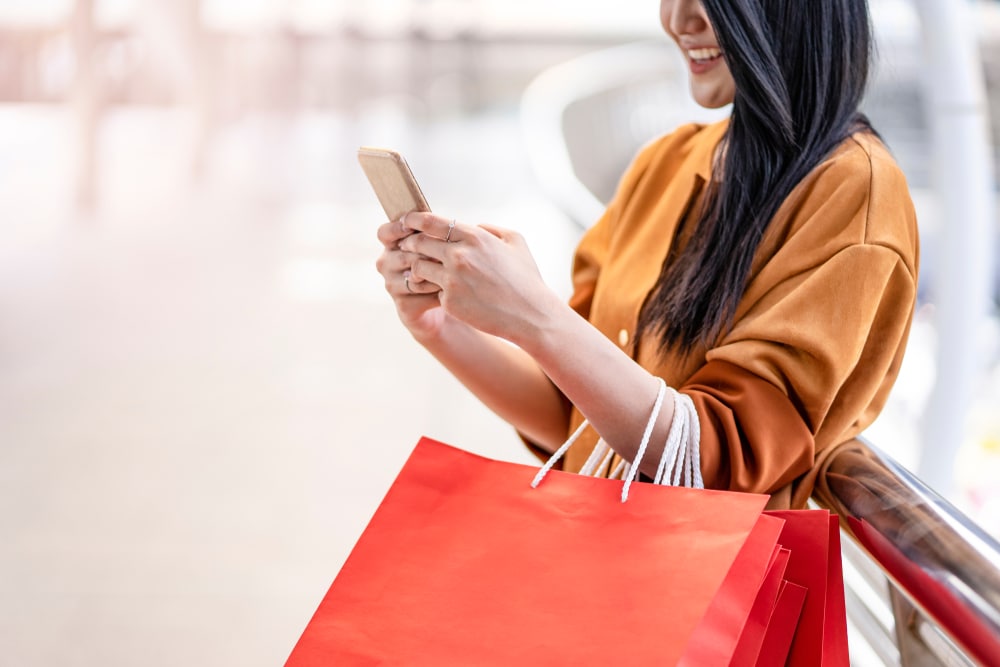Partnership marketing is an established concept of modern retailing and has been used in some form by most retailers and brands. Continue reading “How a retail marketing partner can expand your reach”
Category: Marketing
A closer look: What do consumers want from brands?
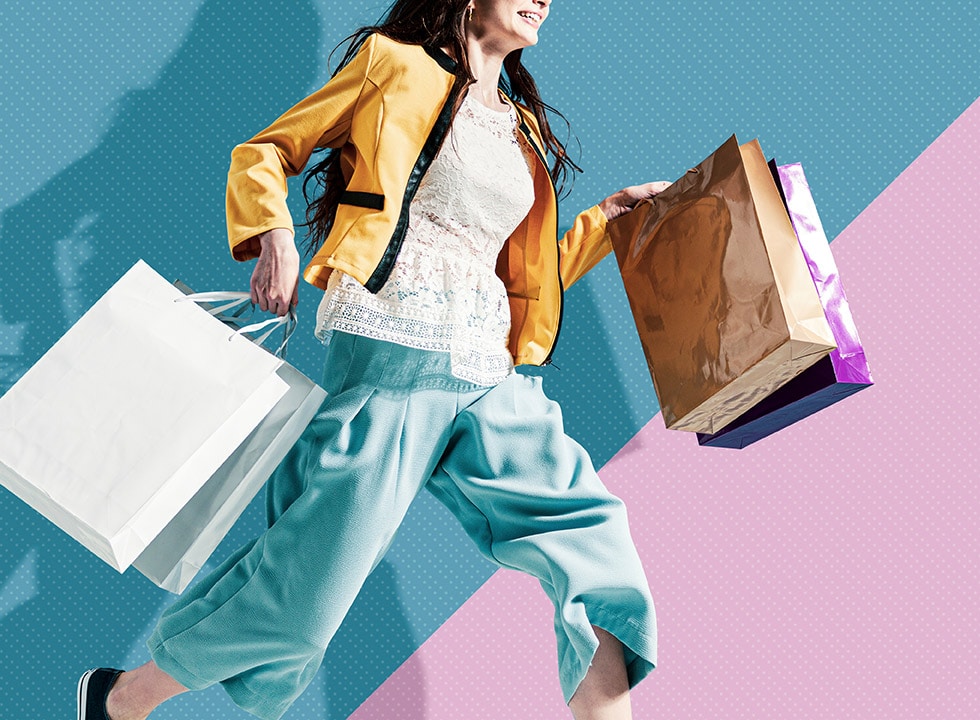
A closer look: What do consumers want from brands?
Gleaning insight into the modern consumer’s mind is beneficial in dictating your strategy. It can be easier said than done, which is why so many brands are miles behind where they’d like to be. However, if you’re committed to understanding, investing, and adapting as you go, your brand will begin to stand out as a pioneer and an innovator.
What Do Consumers Want From Brands?
An Omnichannel Shopping Experience
Very few shoppers are solely “online” or “offline” consumers. The vast majority of consumers shop back and forth between websites, social media, mobile apps, and physical stores. These omnichannel shoppers spend an average of four percent more every shopping trip to a physical store, and 10% more online compared to single-channel shoppers—and, they shop 23% more often.
Your brand’s customers are looking for seamless consistency in look, feel, and messaging—no matter which channel they choose to interact with your brand. Creating an omnichannel experience fosters a sense of community.
Customers not only expect a frictionless omnichannel focus upfront, but they expect it in your back-end processes, as well. Advances in technology have made it easier for brands and retailers to keep items in stock, fulfill orders efficiently, and checkout orders quickly. Bridging the gap between online and offline channels alleviates bottlenecks that would otherwise jeopardize the overall user experience.
Hyper-Personalization
Hyper-personalization leverages artificial intelligence and real-time data to deliver more relevant content, product, and service information to each customer.
Taking this extra step in personalization is important, considering 72% of consumers say they will only engage with brands that tailor marketing messages to individual shopper needs and preferences.
Brands can incorporate hyper-personalization into social, mobile, and in-store marketing—which also creates an omnichannel experience—to cater to consumers’ desires.
Social
Four out of five consumers believe society is more divided than ever—and 78% are looking to leading brands to bridge the divide, using social media as a platform. Brand behaviors that connect with audiences include:
- liking or responding to a fan
- showcasing brand personality
- supporting a cause
- inviting user-generated content
- promoting offline events
Consumers want brands to focus on people, not just products. They look to brands to connect disparate groups of people across platforms. Why does social connection matter? Three-quarters of those surveyed said they would buy from a brand they feel connected to over a competitor. When they don’t feel a connection, 70% are less likely to shop there and 61% spend less when they do.
Mobile
Existing mobile architecture makes it easy for brands to connect with busy, on-the-go, smartphone-enabled shoppers. Brands can partner with a third-party mobile shopping rewards app, like Shopkick to reach an already-loyal base of consumers. Shopkick allows consumers to begin their purchase journey by browsing engaging in-app content from several brands and retailers, whether they’re at home or on the go. For partners, this content helps build pre-shop awareness and consideration and puts products at the top of shoppers’ minds. Users can check the Shopkick app to see which brands or retailers offer “kicks,” or rewards points, which incentivize shoppers to visit a store or browse online. Eventually, Shopkick users redeem their kicks for free gift cards, which builds a positive affinity and loyalty for the brands that awarded them.
In-store
The personalized retail customer experience has overtaken product and price in terms of competitive advantage, with 86% of shoppers willing to pay more for better UX. Brands can leverage Shopkick in-store to offer consumers an engaging and interactive, rewarding experience. In-store, Shopkick utilizes an engaging gamification strategy that drives shoppers to products at-shelf and encourages physical product interaction in exchange for kicks. This allows brands to boost product awareness when it truly matters most—in-aisle, with the product in hand. By offering users an additional kick incentive for making a purchase, Shopkick closes the loop and drives sales. When consumers receive rewards via Shopkick, they attribute them to the partnering brands—also building positive affinity and loyalty.
Value for their Loyalty
Rewarding loyalty may have been a differentiating factor at one time. Now it’s par for the course, with 79% of consumers stating they will only shop with brands who show they care about shopper loyalty.
It’s a common mistake to focus on luring customers through price discounts and special offers—unless you are committed to being known for offering the lowest prices. This angle has worked for brands like Aldi, Dollar General, and Burlington. However, most businesses would rather have greater pricing freedom but still retain their fan base.
The best programs also offer flexibility in rewards, so consumers get what they want in exchange for their loyalty. For instance, many programs have different tiers so customers can gain small or big rewards, depending on how much they’re willing to invest. Flexibility will enable customers to stay engaged at every point in the journey.
Value doesn’t have to be lavish; it can be found in thoughtfulness. A simple gesture like a handwritten note, complimentary sample, birthday bonus offer, or free appreciation gift can go a long way.
Shopkick is a popular rewards app that allows brands to connect with consumers through engagement and incentives. Our partners also use Shopkick to drive sales, steal market share, and produce incredible ROI. Contact us to find out how we can help you deliver what consumers want.
The most effective customer loyalty programs for retail
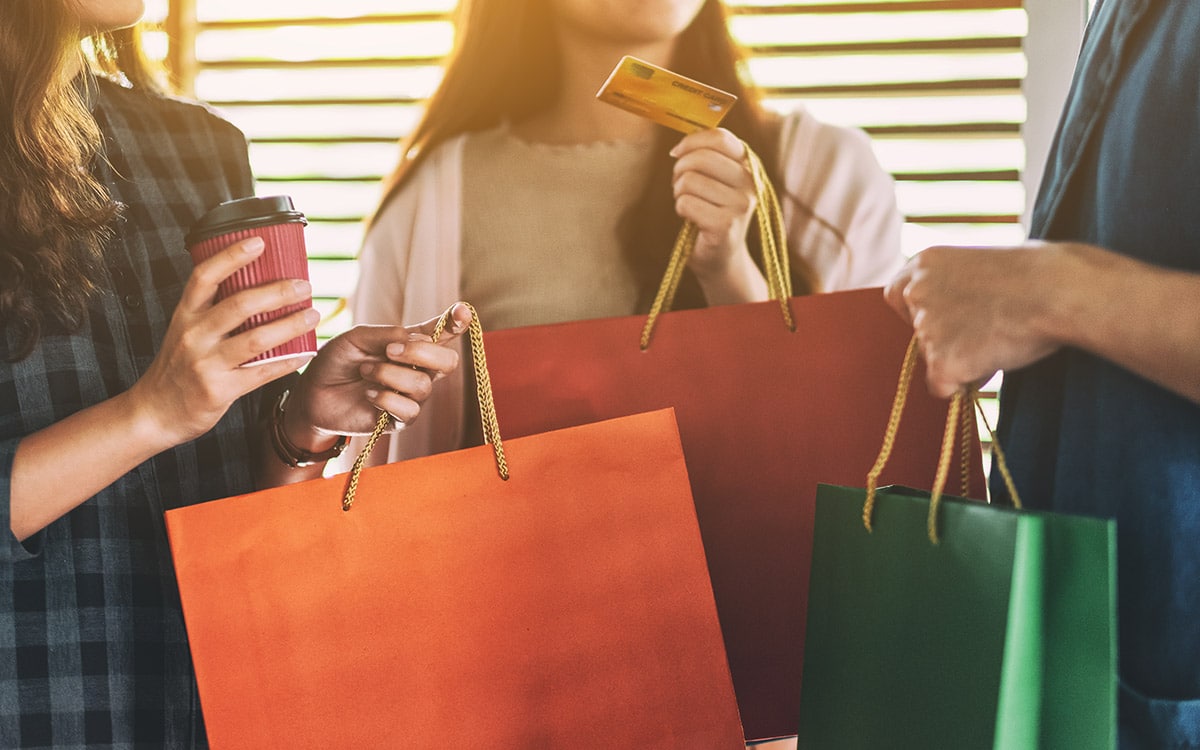
The most effective customer loyalty programs for retail
Research shows that consumers join loyalty programs predominantly for transactional purposes: 75% mention free products, 71% include discounts, 67% value free samples, and 56% want free services. For brands and retailers, meeting those demands is only the beginning when it comes to keeping customers engaged. Those same consumers also expressed the desire to choose their benefits and rewards (85%) and to experience more personalization (74%). In other words, consumers want rewards that mean something to them.
Brands and retailers looking to develop effective customer loyalty programs in retail should pay close attention to the following examples.
4 Examples of Effective Customer Loyalty Programs for Retail
1. Amazon Prime
Amazon Prime quickly ascended to the loyalty champion’s circle after its creation in 2005, and in the last 15 years, it has amassed more than 156 million members worldwide, including 112 million in the U.S.—that’s 65% of Amazon’s total customers. In the U.S., members pay $119 a year for membership, or $12.95 per month. Since the monthly payment option was added in 2015 to lower the payment barrier, it has steadily gained popularity and is now used by over half of Prime members.
Premium loyalty programs encourage spending with attractive offers and the opportunity for customers to recoup their money. This paradigm is similar to the one used by wholesale clubs like Costco, but we often see it in retailers who offer a very specialized product to customers and who already have a high level of loyalty. Gamestop, GNC, and Lululemon are among the retailers with premium loyalty programs because of their niche product offerings.
2. Nordstrom’s Nordy Club
Nordstrom’s revamped loyalty program, Nordy Club, was unveiled in late 2018 and has approximately 12 million members. The program is free and tiered. Like many loyalty programs, it taps into customers’ aspirations, offering rewards that can be applied to any item. This makes the brand more competitive without lowering the value of big-ticket items. In this respect, it is similar to Sephora’s Beauty Insider program. As with other tiered programs, Nordy Club offers greater rewards for greater spending, both in the form of redeemable points and perks like events and services.
Omnichannel
The Nordstrom loyalty program relaunch modernized it and emphasized omnichannel sales. Social media channels were leveraged to help create a sense of community, similar to in-store events. The retailer also introduced an app for its loyalty program. The Nordy Club also encourages online purchasing and BOPIS, with curbside pickup. In stores, space is set aside for events, a café, and makeover areas.
Multitier
The Nordy Club has four tiers based on annual spending. Benefits at the beginning level include exclusive “First to Shop” launches, basic alterations and workshops, in addition to points for purchases. Points are easier to earn and other benefits improve as the customer rises through the ranks. Benefits include a visit from a home stylist at the highest level.
A Key Part of the Brand
“Our loyalty program is a key part of our brand,” Nordstrom’s co-president and director Erik Nordstrom said, speaking to investors in 2019. “And it’s something that’s been vital to us for quite some time. Five years ago, 35% of our business was done through our loyalty program. It is now at 55% and growing rapidly.”
3. REI Co-op Membership
REI takes community building to a new level with its co-op membership. The company offers a real consumer-owned co-op, and lifetime membership that can be obtained by paying a $20 fee. Members can recoup their membership fee very quickly. REI rewards spending with a 10% rebate on all purchases at the end of the year, referred to as the co-op member’s dividend. (Co-op members also vote for board members.) REI Co-op members get discounts on equipment rentals and used equipment and are invited to special members’ sales events. In addition, they discount their extensive lineup of classes and events.
4. Shopkick
Shopkick is a third-party customer loyalty rewards app that works fundamentally differently from brand- or retail-specific loyalty programs. It is a gamified app that users are motivated to download for the rewards and entertainment that it provides. When a brand or retailer partners with Shopkick, they enjoy the benefits of connecting with already-loyal users, without asking them to join a new program, download a separate app, or pay for anything.
Easy to Use
Users can check the Shopkick app to see which brands or retailers offer “kicks,” or rewards points, which incentivize shoppers to visit a store or browse online. In-store, Shopkick utilizes an engaging gamification strategy that drives shoppers to products at-shelf and encourages physical product interaction in exchange for kicks. This allows brands to boost product awareness when it truly matters most—in aisle, with the product in hand. By offering users an additional kick incentive for making a purchase, Shopkick closes the loop and drives sales. Eventually, Shopkick users redeem their kicks for free gift cards, which builds a positive affinity and loyalty for the brands and retailers that awarded them.
Combats Loyalty Fatigue
Shopkick partners won’t become the forgotten victims of loyalty fatigue because Shopkick is enjoyable and undemanding. Consumers don’t have to download so many different loyalty apps when using Shopkick to earn rewards for shopping with their favorite brands and retailers. Shopkick allows consumers access to earn rewards with multiple brands and retailers, as it doesn’t confine them to one specific loyalty program. In many cases, Shopkick can be used in conjunction with other customer loyalty programs; shoppers can earn kicks with Shopkick and rewards through their favorite brand or retailer’s program.
Advantages for Partners
Shopkick is one of the leading apps of its type. It attracts a broad audience that may be hard to reach otherwise. Like an in-house loyalty program, Shopkick both influences buying behavior and tracks it, providing valuable analytics. Consider how Shopkick helped drive incremental purchases for Georgia-Pacific. When the brand launched its Dixie Ultra Deep Dish Plates, they partnered with Shopkick to build awareness and drive trial and consideration for the new product. The campaign received over 16M impressions and was highly successful in educating consumers before their trip to the store, boasting a 99% branded video completion rate. Nearly 50% of purchasers were not initially planning to buy Dixie products before their visit to the store.
The future of retail: How brands can engage millennial consumers

When wondering how they can engage millennial consumers, brands should consider the following: Continue reading “The future of retail: How brands can engage millennial consumers”
How rewards-based marketing influences customer engagement
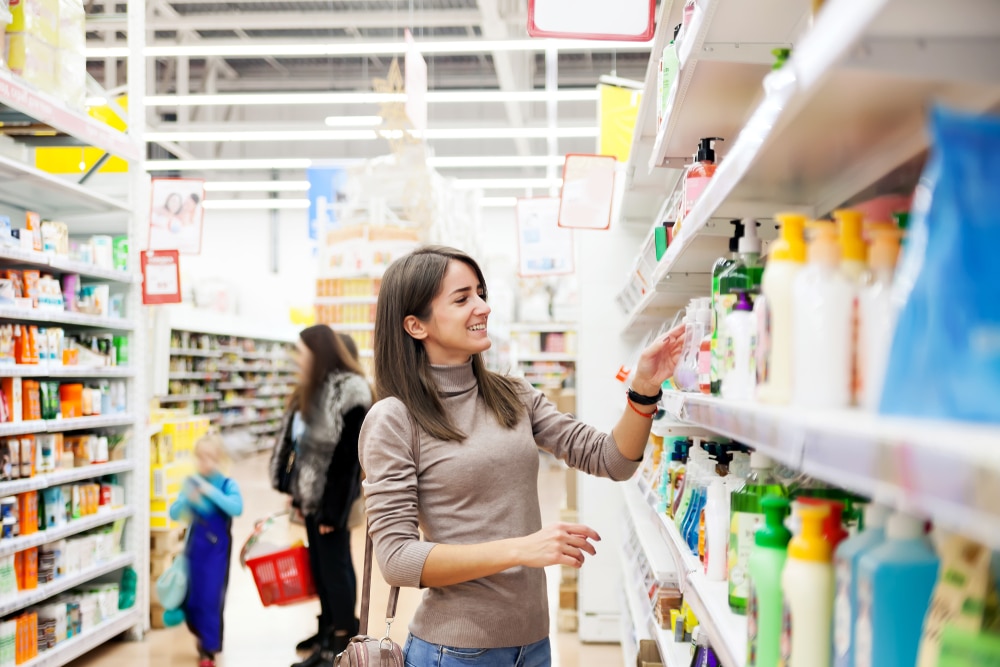
In 2020, it’s not enough for brands to simply be visible. Continue reading “How rewards-based marketing influences customer engagement”
Learn how to increase brand visibility in-store
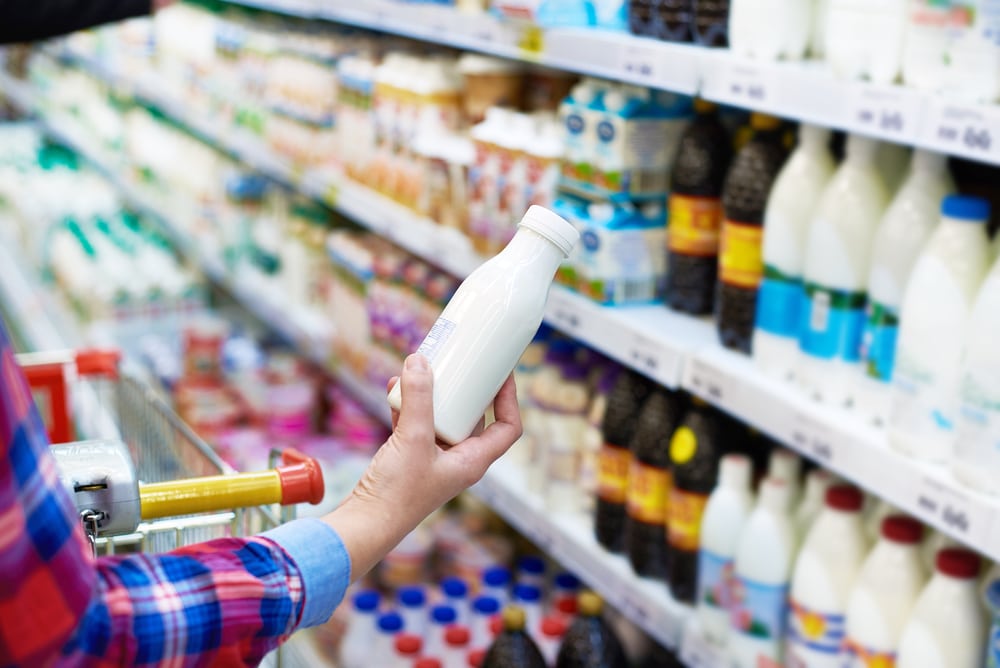
These days, shoppers are entering stores armed with more information than ever before thanks to their mobile devices. Continue reading “Learn how to increase brand visibility in-store”
How to drive incremental sales to your retail store or brand
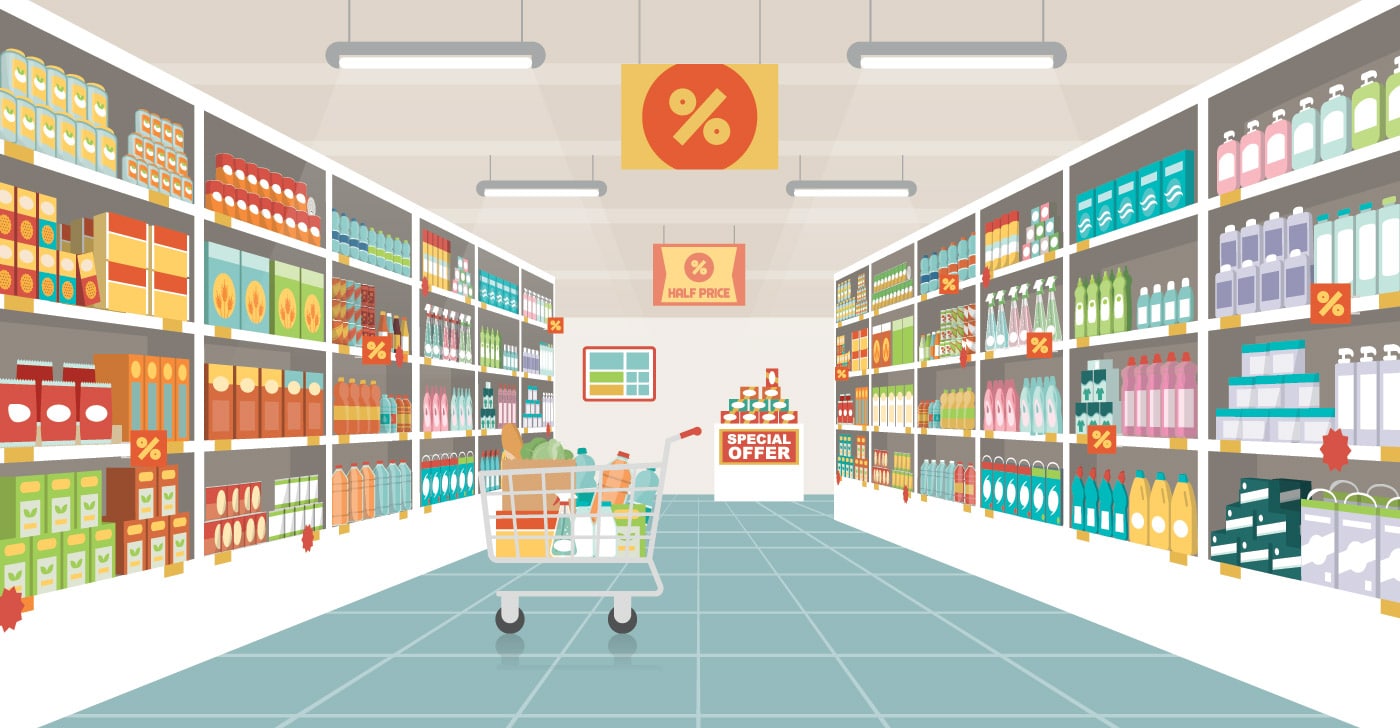
How to drive incremental sales to your retail store or brand
What Are Incremental Sales?
The term “incremental sales” is used to describe the direct, measurable results of a marketing activity or campaign that produces greater sales than anticipated.
Whether you’re a retailer or a brand, one sign of success is the increased number of leads, customers, sales, or other key performance indicators that would not have happened without the current marketing campaign’s lift above-and-beyond your expectations.
When looking to drive incremental sales, brands should look into ways to reach consumers at any given point on the path to purchase.
Why You Should Be Driving Incremental Sales
Incremental sales matter because they increase your revenue, allowing you to surpass goals, invest more back into the business, and enjoy bigger profits. Incremental sales are a matter of basic efficiency and capturing market share before others do.
You’ve likely worked hard to gain customers’ attention. If you’re a retailer, you’ve invested in selecting merchandise, training your staff, constructing displays, arranging layouts, and creating targeted promotions. If you’re a brand, you’ve invested in attracting top talent, product development, packaging, and creating engaging campaigns. All you need to do is encourage shoppers to spend now, and as much as possible, and incremental sales are your proof—shoppers are spending more than you expected.
How to Drive Incremental Sales to Your Brand
The incremental sale is valuable in courting brand new customers from competitors—people who may have never previously considered your brand before. Brands looking to drive incremental sales should consider the ways in which they can engage consumers—turning browsers into buyers, increasing transaction value, and creating more demand.
Turn Browsers Into Buyers
Half the battle is getting your product in the consumer’s hands. Once shoppers can touch, feel, and explore your product in-person, the conversion is not such a far leap from there. In-store sampling, guerilla marketing promotions, and demos are traditional methods of putting your products on center stage. These methods have a more dramatic and sustained impact than mere aisle displays. On average, a demo provides a 150% boost in same-day sales and a 90% boost over the following three months. It’s evident that meaningful engagement turns browsers into buyers.
Increase Transaction Value
Performing better-than-expected on a campaign is not just about increasing the number of sales, but about increasing the amount of money people spend on their transactions, too. Bundle your products in new ways. Take products that complement each other, but are typically sold separately, and try offering the complete package for a single fixed price to create irresistible value. Offer added value at the point of purchase, when buyers are most receptive. Upselling a newer model or cross-selling a complementary product or service at the point-of-purchase can entice 30% to 50% of shoppers to spend more.
Create More Demand
Shoppers don’t necessarily have to need a product to justify their desire for it. There are many ways brands can create demand. Releasing engaging new products is one way to keep a fresh stream of demand lining up around the block. Consider how Apple does this each time the tech giant releases a new iPhone. Building meaningful and personal relationships with shoppers will make them more likely to buy from you even if they weren’t originally planning to do so. Thoughtful data collection and routinely reaching out (via mobile, email, and social media channels) also lets consumers know what they want or need even before they are aware of the void.
How to Drive Incremental Sales to Your Retail Store
For retailers, an incremental sale represents an encouraging sign that campaign marketing dollars are being well-spent, a particular promotion or advertisement is working, or the store layout is enticing shoppers to spend. Similarly to brands, retailers can drive incremental sales by engaging with consumers via multichannel marketing strategies, creating a unified shopping experience across all touchpoints and channels. Retailers with omnichannel strategies drive an 80% higher rate of incremental store visits.
Provide Multiple Touchpoints
It takes anywhere from five to seven touchpoints to make a sale. Ideally, you want to connect with a shopper at multiple touchpoints along the journey to purchase. In the early stages of awareness, you might advertise online to get mobile users into your store. During the engagement phase, you might advertise a sale or hand out informative flyers to let shoppers know what you have to offer. Once shoppers are in the store and considering your offers, nurture these leads by greeting them with highly trained sales professionals who serve as the friendly face of your retail establishment and helpfully answer questions as customers peruse the aisles.
Attract Mobile Foot Traffic
Increasingly within the last five years, retailers have had to adapt their marketing methods to reach consumers wherever and whenever they are planning their shopping trips. Mobile devices are the next frontier for marketing messages. Retailers can use SMS push notifications, mobile-optimized websites, scan codes on packaging, online advertising, retailer-specific apps, and third-party shopping platforms to reach consumers surfing for deals on the couch or planning their trips to the store. Once they’re in the store, shoppers are accessing mobile to learn more about products, compare prices, and snag deals; retailers can capitalize on this.
Reward Loyal Shoppers
High-value offers combined with low purchase requirements are highly effective in driving trial among first-time shoppers. Going one step further, a rewards program is a powerful motivator in encouraging larger purchases and sustained business. Customers are willing to invest more when the perceived value they get in return is higher. They might earn points toward desirable gifts or automatically receive a percentage off a future purchase. Increasingly, top retailers are including partner offers, in addition to offering VIP services and members-only invitations, to enhance the exclusivity of their programs. You can develop your own in-house rewards program or partner up with a rewards platform shoppers already use.
Are You Reaching Out to New Audiences Using the Latest Tools?
Shopkick is among the most popular mobile shopping apps that rewards consumers throughout the full-funnel purchase journey. For brands and retailers, Shopkick provides high consumer engagement along the entire path to purchase. Its unique pay-for-performance model has been proven to deliver high ROI, driving incremental traffic, product engagement, and sales.
Here’s how the rewards platform works: Shopkick app users begin their purchase journey by browsing engaging in-app content from partner brands and retailers, whether they’re at home or on the go. Content like curated lookbooks, informative video ads, and more build pre-shop awareness and consideration. In-store, Shopkick utilizes an engaging gamification strategy that drives shoppers to products at-shelf and encourages physical product interaction in exchange for kicks. This feature is a huge part of driving incremental sales—driving shoppers to a product they may not have thought of or necessarily needed, offering them a reward for picking it up, and another reward for purchasing. This interaction also boosts product awareness at a crucial point in the customer journey and effectively closes the sales loop. Eventually, Shopkick users redeem their kicks for free gift cards, which builds a positive affinity and loyalty for the brands and retailers that awarded them.
When Shopkick’s retail partners wanted to know of the sales, transactions, and customers that Shopkick was driving—how many would not have occurred without the Shopkick program—they conducted research to measure program incrementality. The findings were that Shopkick is a highly incremental program for Shopkick retail partners as a whole and these results stood true across different retail verticals.
- Fifty-seven percent of all sales driven by Shopkick were incremental. That incremental spend was driven by new customer acquisition as well as increased loyalty of existing customers.
- Fifty-five percent of department store sales were incremental, 49% of electronics/big box store sales were incremental and 67% of specialty store sales driven by Shopkick were incremental.
Increased incremental sales represent true success in your latest marketing efforts. Shopkick offers you yet another platform for advertising, metrics, consumer engagement, and personalization. Whether you have an existing loyalty program or not, you can add value to your brand by partnering with one of the most popular mobile shopping apps at a time when mobile marketing is on the rise.
Why a shopper’s in store mobile experience matters in retail
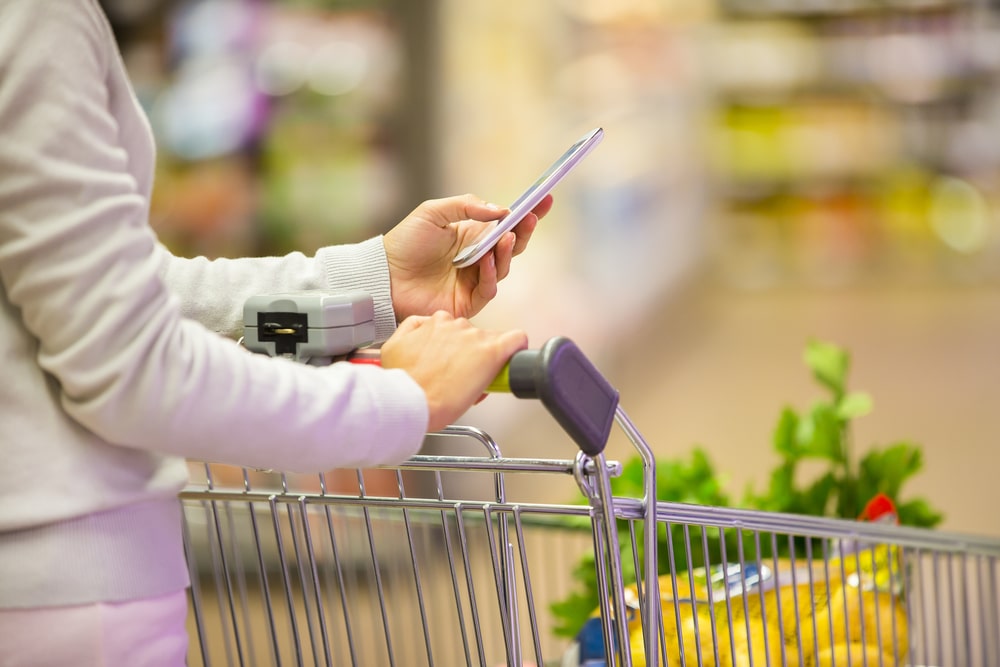
More than half (57%) of shoppers report having used a mobile shopping app while shopping in-store. Continue reading “Why a shopper’s in store mobile experience matters in retail”
Understanding how retail brand partnerships can boost awareness

More than a third of brands cited “awareness” as their primary goal last year. Continue reading “Understanding how retail brand partnerships can boost awareness”
The 3 key elements of a successful brand recall strategy

The 3 key elements of a successful brand recall strategy
Here, we explore the concept of brand recall, how this next-step in awareness is best achieved, what three essential components you’ll need for a successful brand recall strategy, and where to find partners to help you move from being “a” brand to “the” brand that first comes to mind as shoppers consider who can best meet their needs.
Defining Brand Recall
Brand recall is one of two forms of awareness. Aided brand awareness occurs when a shopper is browsing the aisles in the store and recognizes your company when they see the label.
Unaided brand awareness goes one step further, with consumers thinking of your brand as soon as a need arises, without prompting. A greater degree of brand recall is a clear sign of marketing success.
It’s a powerful position to be in when your brand becomes synonymous with the solution for a particular pain point. Brand recall customers typically become frequent buyers, staunch loyalists, and informal brand ambassadors.
How is brand recall achieved?
- A Visual Presence: Colors, songs, logos, mascots—there is a reason these ingredients are part of every sports franchise. The same rings true for the most memorable brands today. Neuroscience tells us that visuals light up the emotional response centers in the brain, which in turn leads to more vivid memory processing. Visual learning, pattern recognition, and decision-making are all closely intertwined.
- A Meaningful Ideology: Shoppers gravitate to brands with unique selling propositions and meaningful messages that match their core values. They want to know your mission statement and what you stand for before they turn over their hard-earned dollars. Establishing your brand’s ideology and offerings can bridge the gap between unaware audiences and what you stand for, thus reinforcing your brand’s importance.
- Direct Engagement: Your marketing efforts should focus on ways to transform passive audiences into engaged prospects. For instance, a person is more likely to remember your brand name if they are writing with a branded pen that has your logo on it every day, as opposed to someone who simply walks past a branded sign. High attendance at your brand-sponsored events, newsletter subscriptions, social shares, and loyalty program app downloads are all signs that you’re actively engaging consumers and positioning yourself for better brand recall.
- A Consistent Effort: Awareness is not something you can set and forget. Establishing reliable, long-term communication channels to facilitate continued awareness is crucial in becoming someone’s go-to brand. The most successful brands are omnichannel sellers that take their business from social media and online marketplaces to mobile devices and brick-and-mortars. While your brand may evolve in purpose and imagery over time, you want to keep your marketing generally consistent across channels over time to form a cohesive picture in consumers’ minds.
3 Key Elements of a Brand Recall Strategy
A brand recall strategy is a plan of action designed to enhance advanced levels of awareness in consumers. Many specific tactics can be added to the plan, but overarching strategic components will include content creation, data collection, and partnership opportunities.
Content
It’s no secret that consumers flock to the internet in search of content that is tailored to their personal interests. Increasingly, they’re searching for local content. You’ll need to invest in regular publishing of professionally-generated content that contains both industry- and location-based keywords designed to attract the right crowd. There are plenty of places to peddle content these days—your homepage, blog, email newsletters, social media sites, third-party niche sites, and video platforms.
Performance Tracking
Powerful data collection will form the cornerstone of your branding strategy, as this information offers a window into the minds of your prospects. Who are you targeting? What are their pain points? What do your buyers have in common? CRM software can help you track a person’s engagement with your enterprise across all channels so you can move from short-lived single-serving interactions to sustainable relationship building. In physical stores, you can install beacons or in-store sensors to understand how shoppers are experiencing your brand.
Collaboration
Data analytics, keyword research, social listening, and customer relationship management will likely lead you to discover potential partnerships for your brand. You may find organizations that share the same goals as you, though they may not be direct competitors. Sports teams, charities, community groups, service providers, retailers, or tech providers can all make valuable partners. With newfound partners, you can get your brand out in front of new crowds, launch mutually-beneficial campaigns, and take advantage of your partners’ existing marketing infrastructures.
Brand Recall Technology
The utilization of modern technology is not to be overlooked when creating a brand recall strategy. The average adult spends approximately 3 hours and 43 minutes on mobile devices each day. For brands looking to acquire and hang onto market share, there is no more valuable medium than the smartphone.
Over 230 million Americans own a smartphone, and 79% of these users have made a purchase through a mobile website or app within the last six months. Not only are shoppers buying with mobile, but they’re increasingly using mobile to enhance the in-store experience and assist with purchases.
Shopkick is one of America’s top mobile shopping rewards platforms. The app has a highly engaged, highly loyal user base who shop on a regular basis. Here’s how the rewards platform works: Shopkickers begin their purchase journey by browsing engaging in-app content from several brands and retailers, whether they’re at home or on-the-go. This content includes curated lookbooks, informative video ads, and more. For partners, this content helps build pre-shop awareness and consideration and cements your brand in shoppers’ minds. Users can check the Shopkick app to see which brands or retailers offer “kicks,” or rewards points, which incentivize shoppers to visit a store or browse online. In-store, Shopkick utilizes an engaging gamification strategy that drives shoppers to products at-shelf and encourages physical product interaction in exchange for kicks. This allows brands to boost product awareness when it truly matters most—in-aisle, with the product in hand. By offering users an additional kick incentive for making a purchase, Shopkick closes the loop and drives sales. Eventually, Shopkick users redeem their kicks for free gift cards, which builds a positive affinity and loyalty for the brands and retailers that awarded them, aiding in the ability for consumers to recall those brands.
Why the most effective immersive brand experiences feature mobile
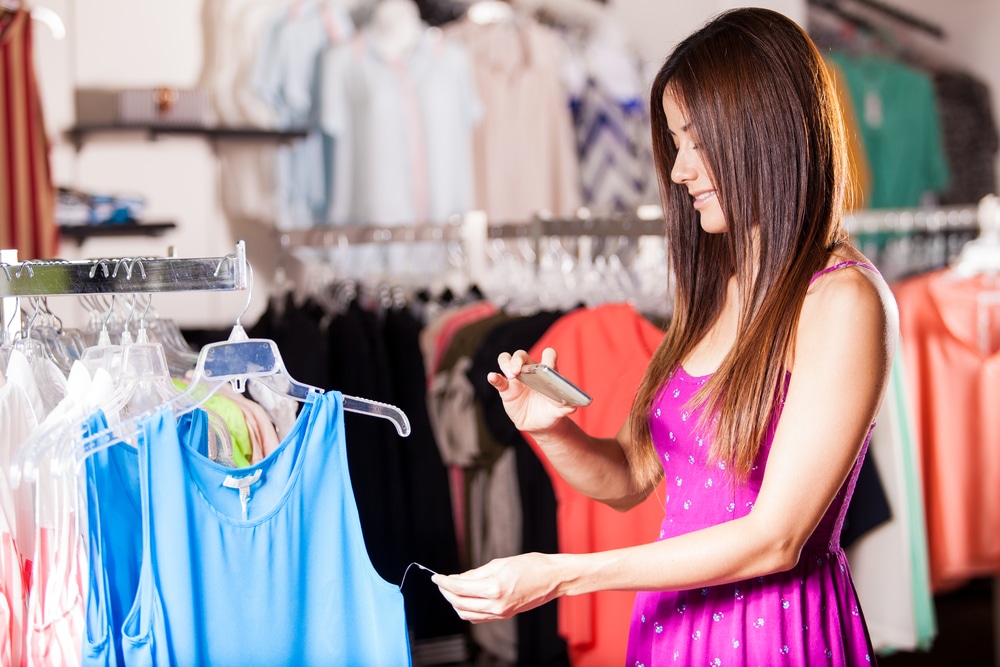
The most effective immersive brand experiences are driven by digital technology—more specifically, mobile technology. Continue reading “Why the most effective immersive brand experiences feature mobile”
How to leverage in-store digital marketing to boost sales
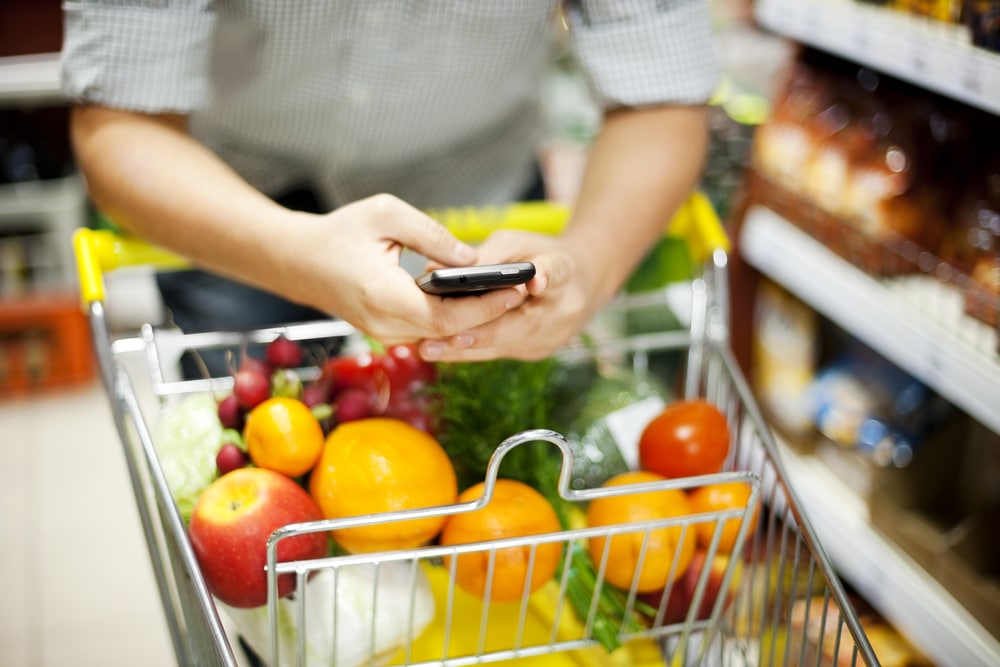
In-store digital marketing in 2020 looks very different than in-store digital marketing even five years ago. Continue reading “How to leverage in-store digital marketing to boost sales”

